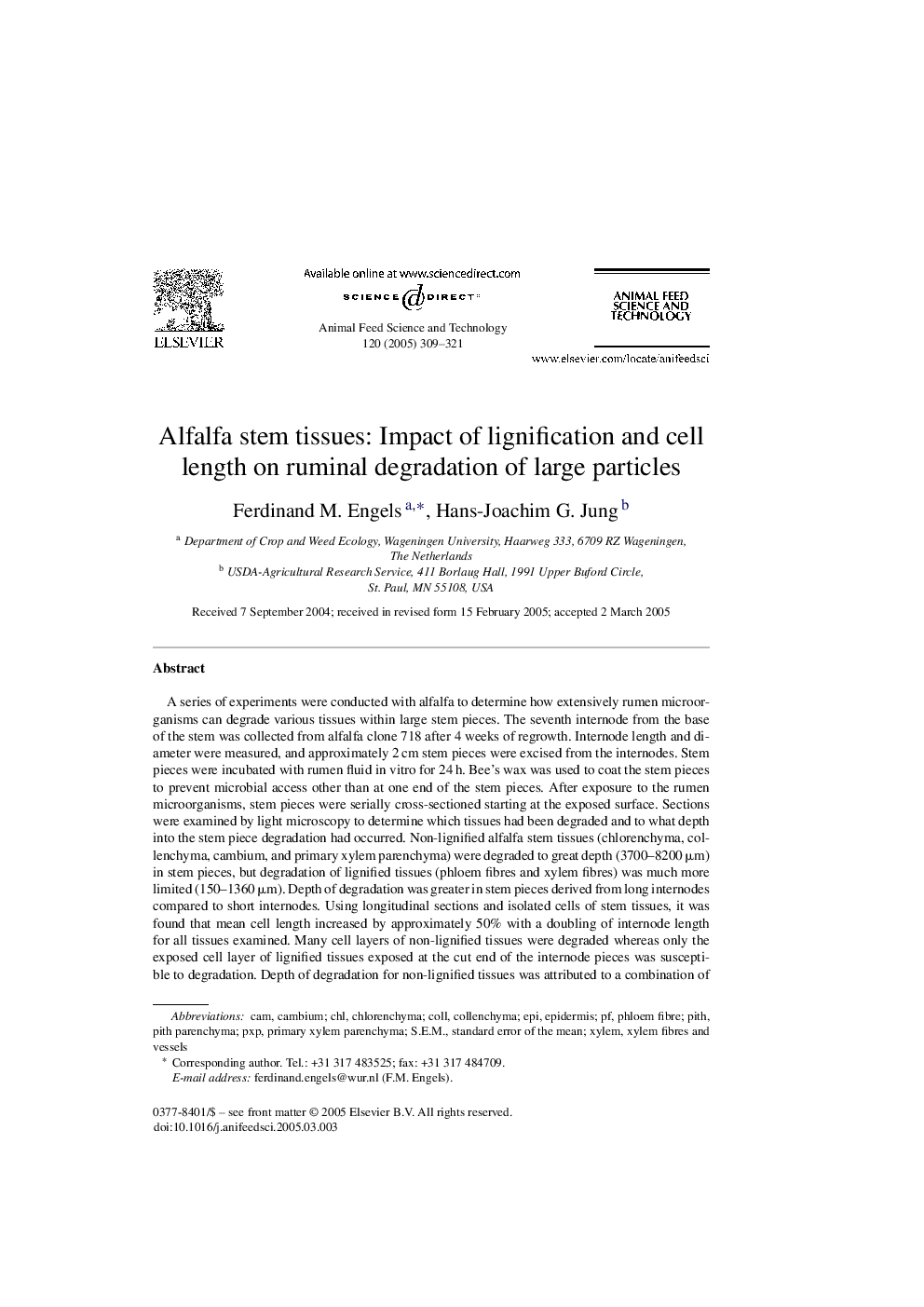| Article ID | Journal | Published Year | Pages | File Type |
|---|---|---|---|---|
| 8973722 | Animal Feed Science and Technology | 2005 | 13 Pages |
Abstract
A series of experiments were conducted with alfalfa to determine how extensively rumen microorganisms can degrade various tissues within large stem pieces. The seventh internode from the base of the stem was collected from alfalfa clone 718 after 4 weeks of regrowth. Internode length and diameter were measured, and approximately 2 cm stem pieces were excised from the internodes. Stem pieces were incubated with rumen fluid in vitro for 24 h. Bee's wax was used to coat the stem pieces to prevent microbial access other than at one end of the stem pieces. After exposure to the rumen microorganisms, stem pieces were serially cross-sectioned starting at the exposed surface. Sections were examined by light microscopy to determine which tissues had been degraded and to what depth into the stem piece degradation had occurred. Non-lignified alfalfa stem tissues (chlorenchyma, collenchyma, cambium, and primary xylem parenchyma) were degraded to great depth (3700-8200 μm) in stem pieces, but degradation of lignified tissues (phloem fibres and xylem fibres) was much more limited (150-1360 μm). Depth of degradation was greater in stem pieces derived from long internodes compared to short internodes. Using longitudinal sections and isolated cells of stem tissues, it was found that mean cell length increased by approximately 50% with a doubling of internode length for all tissues examined. Many cell layers of non-lignified tissues were degraded whereas only the exposed cell layer of lignified tissues exposed at the cut end of the internode pieces was susceptible to degradation. Depth of degradation for non-lignified tissues was attributed to a combination of cell wall degradability, cell length, and the presence of intercellular spaces in chlorenchyma tissue. The lignified wall established a complete barrier to degradation of cells below those mechanically ruptured.
Keywords
Related Topics
Life Sciences
Agricultural and Biological Sciences
Animal Science and Zoology
Authors
Ferdinand M. Engels, Hans-Joachim G. Jung,
